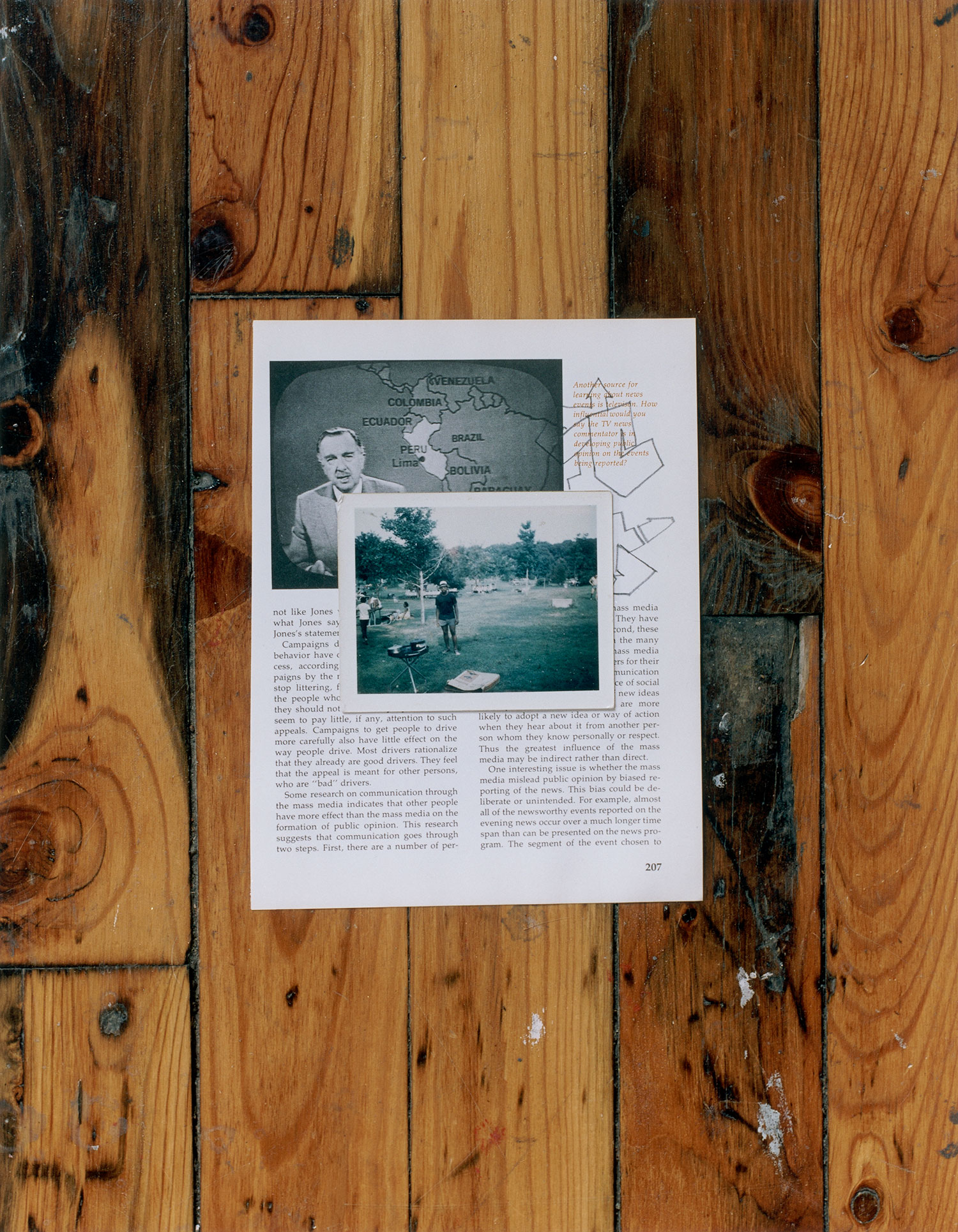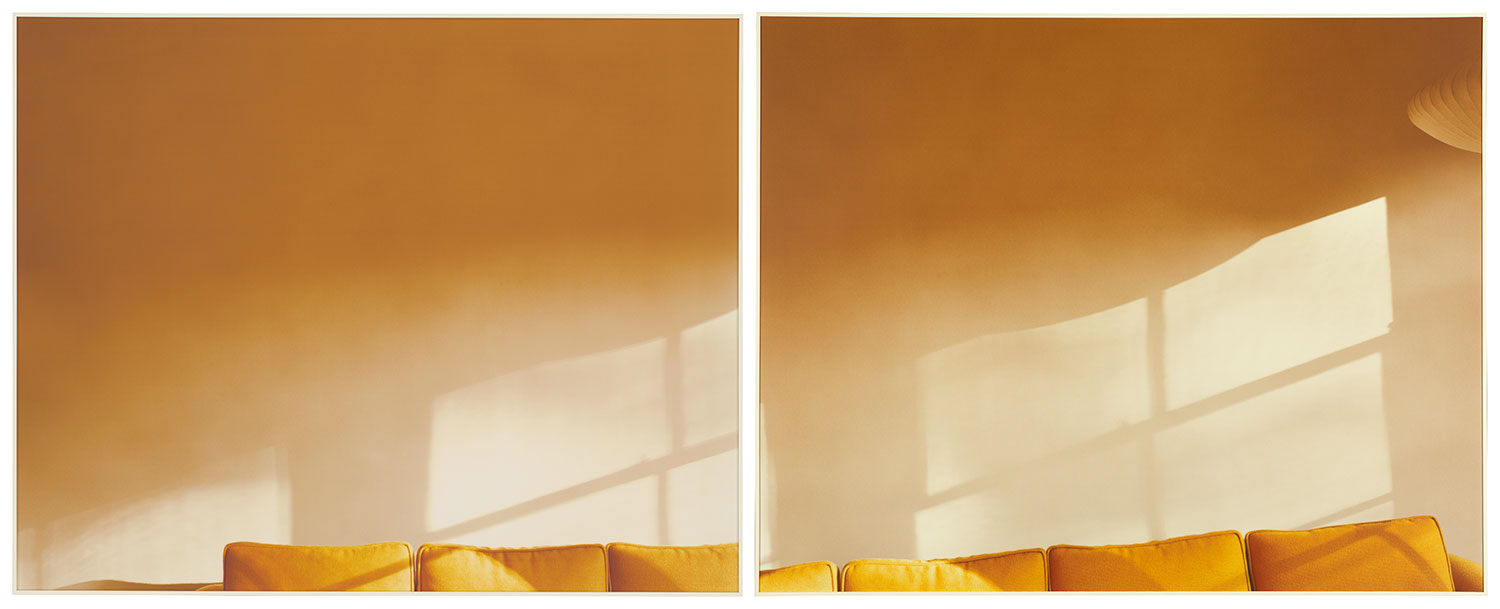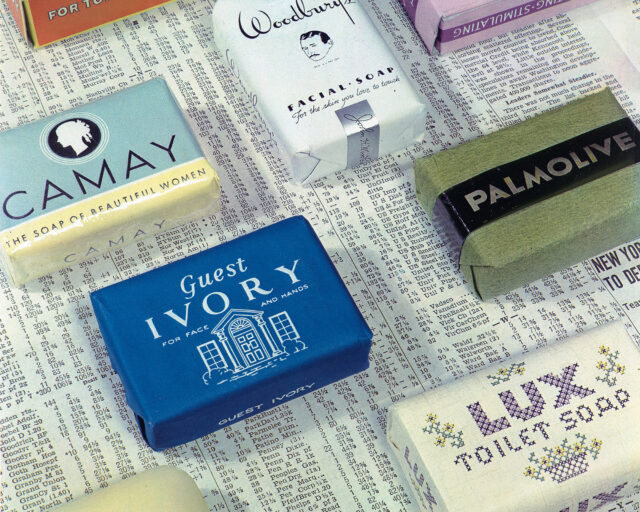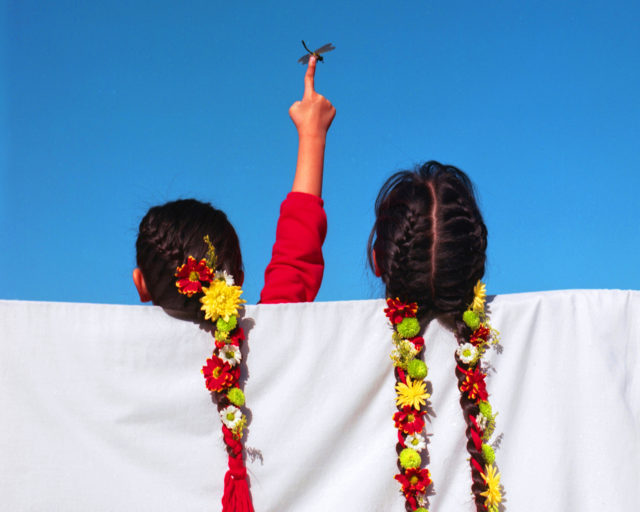Is the Still Life the Form of the Moment?
Six photography curators consider images that have new resonance in the era of social distancing.
Is the Still Life the Form of the Moment?

© the artist and courtesy the Institute of Contemporary Art/Boston and Perrotin
Time during shelter-at-home seems to be on perpetual repeat, as days slip into weeks and—can it really be?—into months. Some say photography freezes time, but Leslie Hewitt calls her photographic series Riffs on Real Time, begun in 2002, a durational work, because she combines seemingly unrelated materials from different eras to continually make new meanings. She creates, then photographs, temporary arrangements of books, magazines, snapshots, and other printed materials against a backdrop of colorful shag carpets or well-worn wood floors. Time works in different registers in Hewitt’s series. We peer back in time through printed ephemera (from Ebony, Jet, and other Civil Rights–era publications), but we know that the arrangement itself is fleeting. We bring our own present-day associations to each work, so each reading is, in essence, time-stamped.
In these works, world events and personal events are collapsed, and Hewitt’s juxtapositions speak to dislocation and repetition, feelings all too familiar now. Hewitt’s neatly arranged still life seen here features a seemingly ordinary snapshot of a man in shorts barbecuing in a park (remember BBQs?) atop a magazine page featuring Walter Cronkite reporting the news. I study the JPEG on my screen, its slight pixilation a far cry from the actual work’s crisp description. I scan my visual memory for what it was like to experience this work in person. I wish more than ever that I could see this artwork in the flesh. I think back to when I first showed this series over a decade ago (that seems like a lifetime ago), and if during our many conversations over the years, Hewitt told me about the man in the snapshot. Is it her father, an uncle, a friend, or a stranger? Those shorts are pretty short, so it must be the 1970s or ’80s. But I digress. As I “read” the photograph rather than just look at it, I wonder what kinds of magazines, snapshots, news items, and ephemera will become the mementos of our own distinctive time. I wonder what riffs on tomorrow will look like.
—Eva Respini, Barbara Lee Chief Curator, Institute of Contemporary Art/Boston

© the artist and courtesy Tate
A successful banker, Shikanosuke Yagaki was a self-trained Japanese photographer active in the amateur camera clubs of Osaka and Kyoto throughout the 1930s. In Still Life (1930–39), Yagaki captured an after-dessert moment on a Western-style dining table one afternoon, when the sun cast bright light over glassware, a service bell, and a matchbox. In the left half of the photograph, he let the light choreograph shadows to reveal the objects’ textures and structures. Yagaki was known for his dynamic experiments with light, natural or artificial, and its potential to sculpt space in his pictures of modern life.
Without professional training, Yagaki developed a sophisticated photographic style, which combined the influence of European modernism with everyday subjects he found in Japanese urban settings in the early Shōwa era. In 1931, the Werkbund exhibition Film und Foto—originally staged in Stuttgart in 1929 and featuring the work of artists such as László Moholy-Nagy, El Lissitzky, and Man Ray—traveled to Osaka and had an impact on photographers like Yagaki who embodied the importance of amateur camera clubs as a dominant force in the new photography movement, known as Shinko Shashin, in 1930s Japan. His gaze at modernity, seen in his depiction of chaos, speed, and modern materials and structures, resulted in gelatin-silver prints considered radically avant-garde at that time. Aware of the transformative role of photography in modern visual culture emerged around the world, Yagaki unearthed unexpected beauty in the everyday.
—Yasufumi Nakamori, Senior Curator of International Art (Photography), Tate Modern, London

© the artist and courtesy the San Francisco Museum of Modern Art
There is a lot of attention being paid to toilets these days, which can serve as refuges from the clamorous family members or annoying roommates with whom we might currently be sheltering, as well as places to store all that toilet paper we’ve been hoarding. Historically, toilets have also been sources of artistic inspiration. Marcel Duchamp’s Fountain (1917) is the ur–example, of course, but there is also Edward Weston’s iconic Excusado (1925), a sensuous study of a porcelain throne. In the best-known version, Weston photographed his commode from below, emphasizing the architectonic shape of the bowl and base. A modernist tour de force, the elegant composition is stripped of any unnecessary detail.
Bill Owens took a different angle in his Tidy Bowl, Walnut Creek (1979), looking right down the tube, so to speak, to capture the vantage he would have had when making use of this particular facility. It is a hilarious riff on Weston, replacing clean lines with jarring suburban clutter. Here, a blood-red seat is offset by claustrophobic 1960s floral wallpaper and an incongruous pair of decorations carefully set out on an olive hand towel. They include a pink silk rose anchored by a rust-colored ribbon next to a small plaster replica of Vincenzo de Rossi’s Hercules and Diomedes from the Palazzo Vecchio in Florence, a sculpture known for the unique choice of handhold deployed by one of the wrestlers. People often put their naughty art in the powder room to titillate their guests. That figurine certainly would have made too much of a statement on the coffee table.
—Erin O’Toole, Baker Street Foundation Associate Curator of Photography, San Francisco Museum of Modern Art

© the artist and courtesy J. Paul Getty Museum, Los Angeles
In 2000, the J. Paul Getty Museum invited eleven artists, including photographer Uta Barth, to create work in response to objects in the institution’s collection. Finding inspiration in Claude Monet’s Wheatstacks, Snow Effect, Morning (1891)—a painting that demonstrates how light alters the perception and appreciation of a subject—Barth created a series of multipart photographs that examine how daylight streams through her living-room window.
Her not-quite-stereoscopic diptych . . . and of time . (AOT 4) (2000), presents two subtle variations of the same scene: a sparsely appointed interior bathed in warm, soft light. In both images, the outlines of a paned window are cast against a wall, floating over the cushions of a vibrant, yellow sofa like specters. A paper lamp appears suspended in the upper right corner of one image. By relegating these tangible objects to the edges of the frames, Barth emphasizes the negative space in the room, as well as how light can help to reorient our perception of the familiar, transforming the spaces we inhabit into unconventional scenes.
The contents of Barth’s home, from furniture to small ornaments and vessels, have regularly featured in her work for over two decades. But the real pursuit of these visual investigations concerns the act of looking itself. Prolonged observation, especially when applied to one’s immediate surroundings, can encourage reflection and a more nuanced understanding of the mundane. In this moment of collective pause, appreciation of the still life and the careful looking it involves has never felt more relevant.
—Arpad Kovacs, Assistant Curator, Department of Photographs, J. Paul Getty Museum, Los Angeles

© the artist and courtesy The Museum of Modern Art, New York
Joanne Leonard’s photographs of home interiors from the 1960s and ’70s attend to corners, nooks, shelves, niches, countertops, and note boards by the telephone strewn with to-do lists, messages, and bills to pay: repositories for things that are indispensable, if not immediately alluring. Leonard has said that “feminism is something like a filter” and “a tool for looking at what’s missing”—an outlook that is evident in her approach to still life as a feature of a practice she has called “intimate documentary.”
This photograph is from a series of interiors of the house of her friend Corean, a neighbor in West Oakland, California, where Leonard lived from 1963 to 1972. The woman’s portrait that centers this picture seems to order everything around it. Spanning two walls, the portrait sees the room. So often the place for icons, shrines, and altars, corners are a space for almost-sacred items. Corean’s corner objects all require care. Arranged on a vertical axis, facing Leonard’s camera, they appear stacked, forming an architecture of ascending registers. The houseplant’s foliage ornaments the portrait without obscuring it, separating it from the rest of the room and reinforcing its pride of place.
Often, Leonard’s photographs are also composed to offer a vantage onto a slice of an adjacent space. Here, elements from the margins of the picture—a mirrored shelf, a calendar portrait of Dr. Martin Luther King Jr. in the next room—inform the central arrangement, testifying to the power afforded images and sites of display. Photographic still lifes can communicate the values encoded in objects. Leonard recognized the artful disposition of Corean’s domestic décor, and the camera enabled her to transmit its visual intelligence beyond the private sphere of the home.
—Phil Taylor, Curatorial Assistant, Department of Photography, The Museum of Modern Art, New York

Courtesy the Estate of Jimmy DeSana and Salon 94
In 1985, shortly after having his spleen removed due to complications from AIDS, the New York–based photographer Jimmy DeSana began making still lifes, a genre that for centuries has expressed both the abundance and transitoriness of life and earthly goods. As a central figure in the East Village arts and music scenes during the previous fifteen years, DeSana had made his name creating portraits and vivid tableaux of nude figures in domestic interiors. No longer able to produce such elaborate scenes because of his health, as well as his increasing dissatisfaction with representations of queer bodies in the media, he turned to abstraction, using household objects, colored gels, cutouts, collage techniques, and multiple negatives.
Take, for example, Baseball (1985–86), a chartreuse-hued photograph of an orb perched on a flat-top pyramid. At first glance, the work is a formal study in light, color, and shape that recalls an ancient monument through its unclear scale. Yet those familiar with DeSana’s work might also be reminded of one of his last self-portraits from the same year, in which a long, curved scar on his torso, bathed in red light, evokes the thick stitches on a baseball.
This sort of ambiguity became increasingly important to DeSana. To many, art about AIDS is synonymous with AIDS activism. Relatively shy and taciturn, DeSana performed his own form of activism in the way he knew best: using photography to question representation, taste, and ideology. “If I could do a show that confused people so much, that was so ambiguous that they didn’t know what to think, but they felt sort of sickened by it and also entertained,” DeSana told his friend and fellow artist Laurie Simmons in an interview shortly before he passed away in 1990, “then for me that would capture the moment that we’re going through right now.”
—Drew Sawyer, Phillip Leonian and Edith Rosenbaum Leonian Curator, Photography, Brooklyn Museum
Subscribe to Aperture and never miss an issue.

























